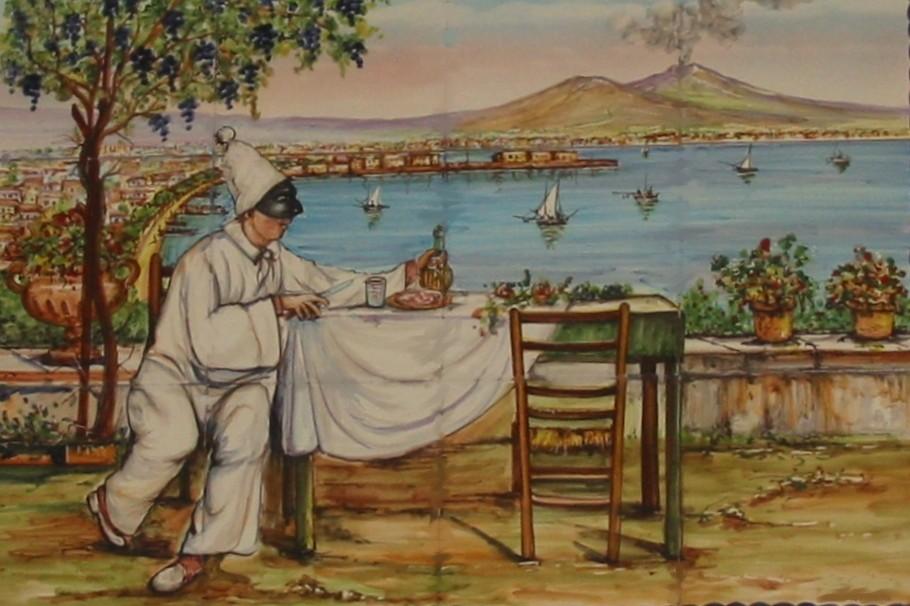History of the Neapolitan theatre

Who are the 5 most important authors of the Neapolitan theater? Let's discover them, at the basics of the Neapolitan theatre, it couldn't miss the most popular Partenopean mask: Pulcinella. It was born as a carnival mask at the end of the 16th century, but only at the very beginning of the 19th century it was used as an instrument of satire and political criticism.
Since the ancient times, theatre in general has always been representing all the variuos folkloristic attitudes; for example, the first traces of the Neapolitan theatre took place during the Aragonese period with Jacopo Sannazaro and Pietro Caracciolo, who took credits for spreading the theatrical culture even among the lower society ranks, as well as having a poetic function, especially in the courts.
In Naples, the 20th century theatre, reached its best thanks to some of its excellent exponts. Let's see who they were.
Edoardo Scarpetta and the 'ìborn of Felice Sciosciamocca''
The picture of Felice Sciosciammocca appeared for the first time in 1887, in the comedy called "Il medico dei pazzi", where as its name meant "blow into the mouth" and was mainly used to indicate a naive and gullible person who believes in everything.
Firstly, its origins were conferred to Antonio Petito, a well-known playwright and Pulcinella's interpreter who, during its performances, adapted it to Sciosciammocca character just for Scarpetta. These particular character's features, joined to a missing instinctive craftiness, make it more similar to the proper 'village idiot', from which later was born the term "caratterista" (in Neapolitan dialect).
Among the other works by Edoardo Scarpetta, we remember: "Miseria e nobiltà" (1887, remake in 1914) and the funniest "O'scarfalietto"
Here I laugh.Edoardo Scarpetta
Edoardo, Peppino e Titina: the De Filippos' brothers
Considered to be the heirs of the great Scarpetta, the three De Filippos' brothers, Edoardo, Peppino and Titina, represent the Neo-realistic period of the Neapolitan theatre.
Moving their fist steps as an independent theatre company, lately the three brothers stood out for their own veniality, drawing on the typical Neapolitan background a wide-ranging stock of situations and characters that brought them to success. In particular, Edoardo managed to mix drama and comedy (working with the sister Titina in "Filumena Marturano" in 1946), while Peppino fit himself to the humouristic genre also working with Totò in such most successful cinematographic comedies.
The work that see the three brothers featuring all together is "Natale in casa Cupiello" (1931). Recently, the last member of the De Filippo's family, Luigi (who was Peppino's son), passed away.
Naples is like a curious country/ it's like an old theatre, always open/ Here it comes up people that without any melody/ walk down the streets and sing.Edoardo De Filippo
The prince of laughter: Totò
Antonio De Curtis, alias Totò, was one of the greatest exponents of the Neapolitan theatre, who managed to get the first successes thanks to his Hogarthian attitude.
In the post-war Naples, he became an authentic iconic comedian, exelling himself as a brilliant caricaturist, thanks to works such as "Totò, Peppino e la Malafemmina" (1956) and many others, coming right into the Italian popular culture. With him, in fact, the Neapolitan theatre saw the raising up of the variety show.
During the years, gaining success in all social classes, he earned the title of 'Prince of laughter'.
Noblemen are such by birth alone; and I, if you allow me to say so, was born one.Totò
Nino Taranto and his song 'Ciccio Formaggio'
The real 'macchietta' character was introduced by Nino Taranto, who appeared for the first time in the Neapolitan variety show in the mid- 20s.
Lately, became head of a theatre company and dedicated himself to the playhouse. His strong point was the well-known son "Ciccio Formaggio", that endorsed him as the main comical singer of the Neapolitan overview of the time.
Character cited and reinterpreted in many comedies, even in our day.
Who is leaving, knows better from what he is leaving, but still doesn't know what is looking for.Massimo Troisi
The born of ''New Pulcinella'': Massimo Troisi
The success of the Neapolitan theatre in the late 20th century was due to the one who has been considered to be the 'New Pulcinella': Massimo Troisi.
From cabaret to the theatre, Troisi was able to put on stage the authentic human spirit, giving in this way proof of how comicality wasn't only linked to the tradition, but also innovative and for everybody.
In particular, what made him different with respect to his predecessors was the fact that he introduced the Neapolitan dialect into a funny and clumsy way, giving birth to a kind of 'Partenopean koinè' . Among his masterpiece,we recommend you: ""Ricomincio da tre" (1981); "Scusate il ritardo" (1983); "Non ci resta che piangere" (1984), and, at last, "Il postino".










Lascia un commento